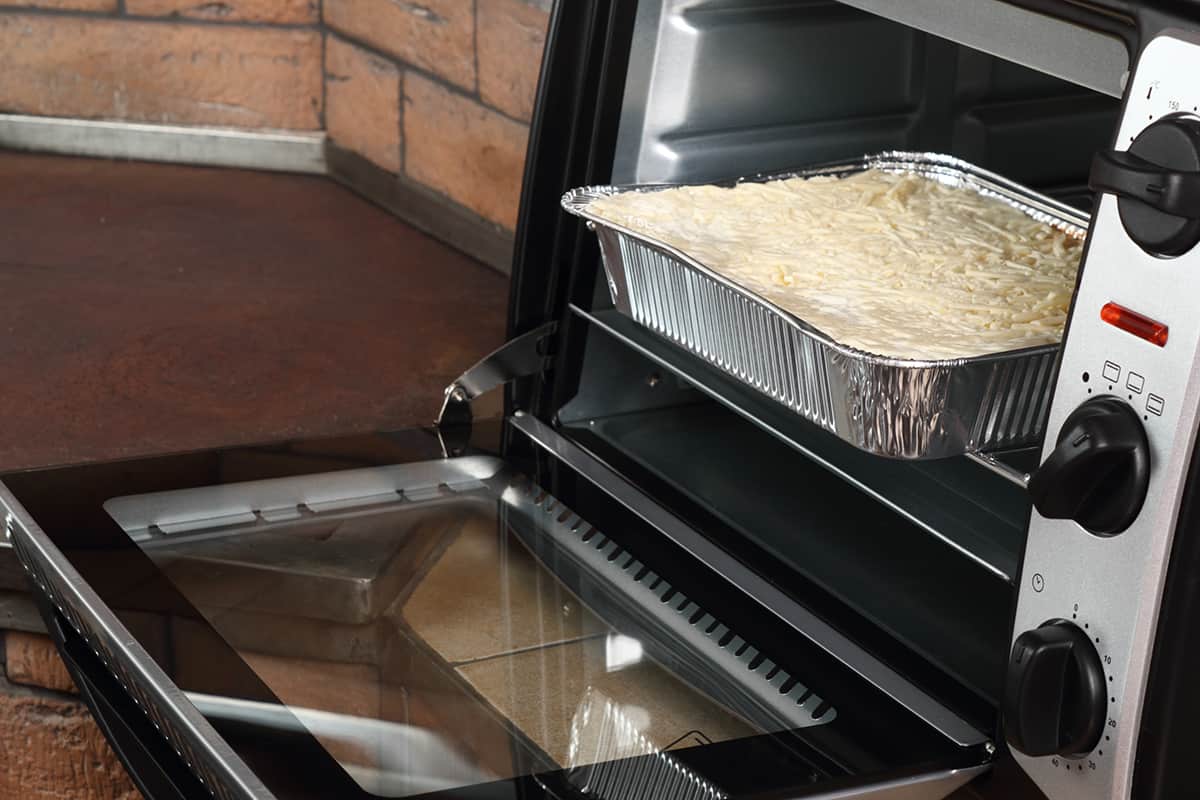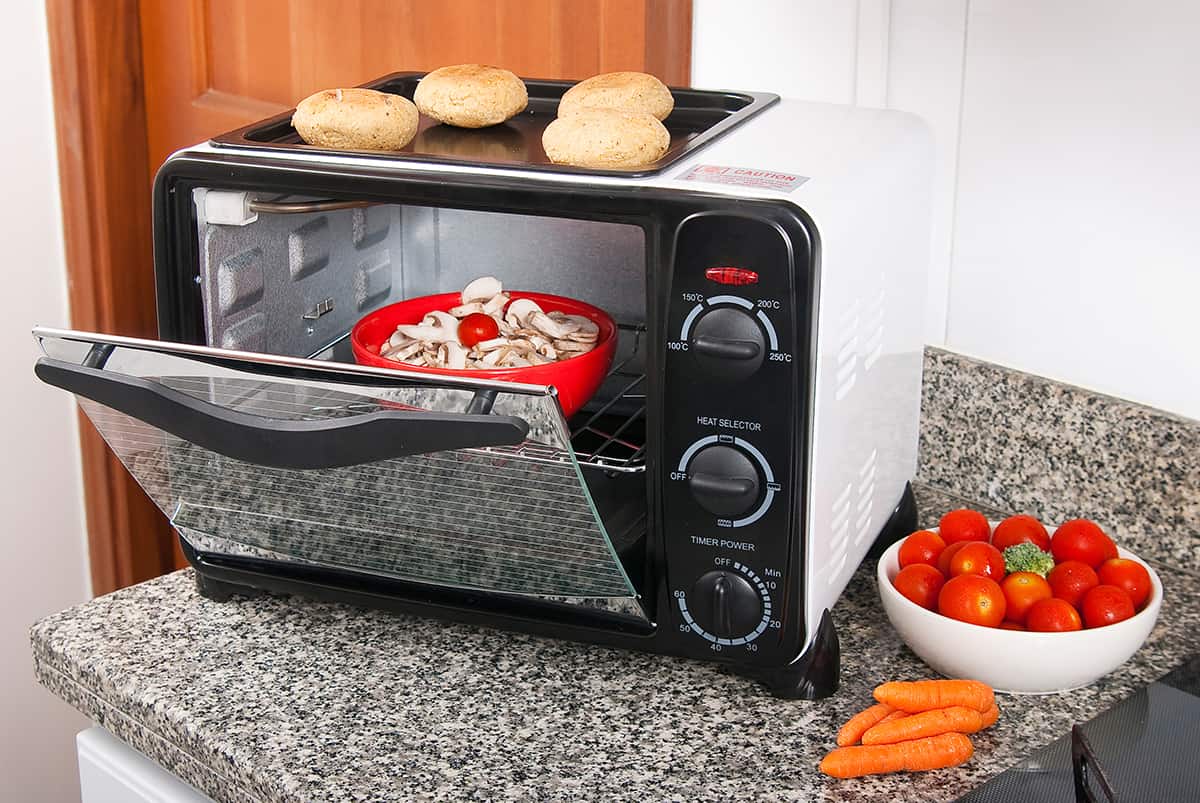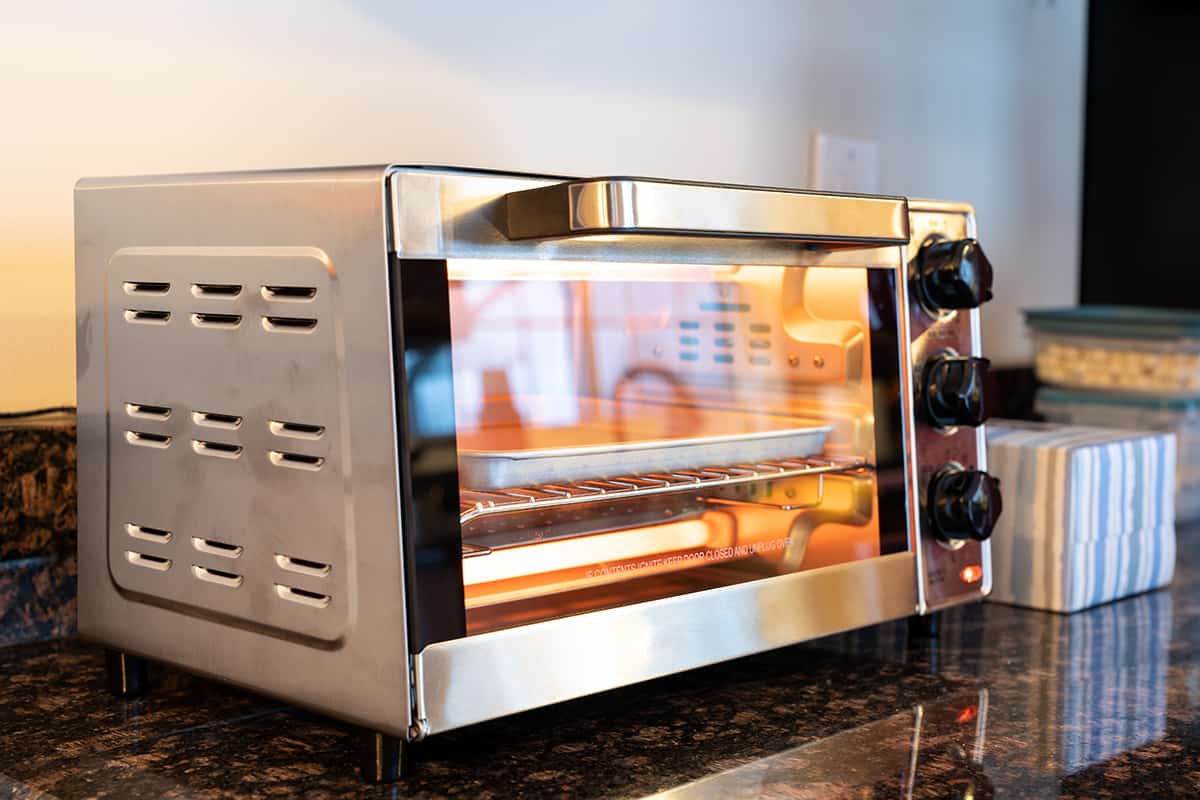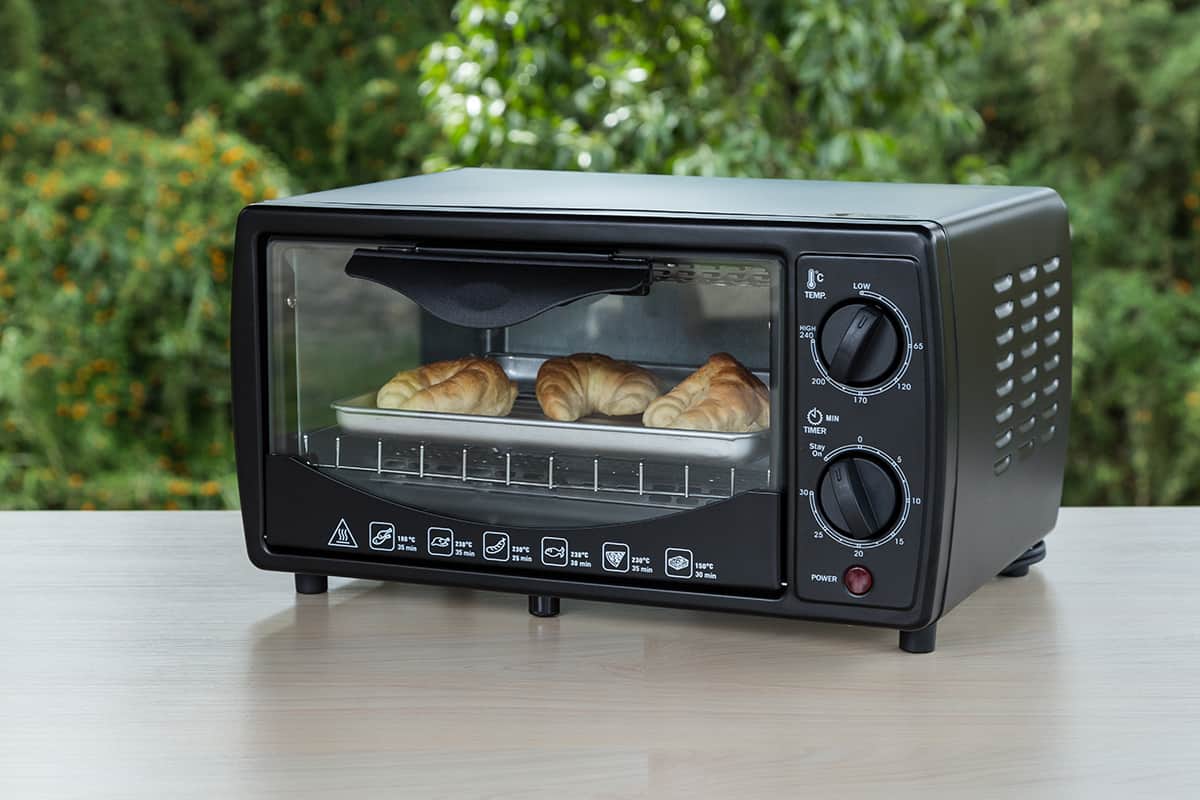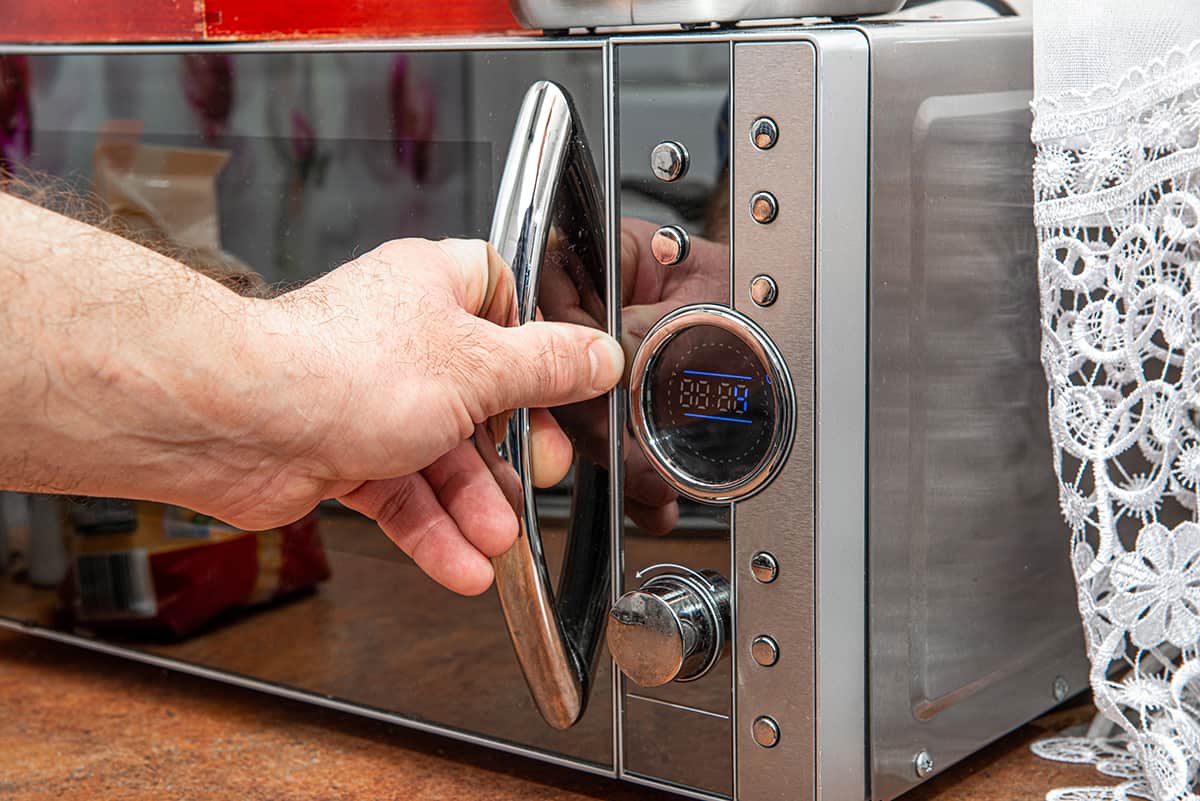Toaster ovens are versatile kitchen appliances, perfect for reheating, baking, and toasting various dishes. With their compact size and efficiency, it’s no wonder they’re a favorite in many households. One question that often arises when using toaster ovens is whether it’s safe to use aluminum foil.
Yes, you can safely put aluminum foil in a toaster oven. This is a helpful way for catching crumbs and keeping the appliance cleaner after each use. Just make sure the foil isn’t too close to the toaster oven’s heating coils.
This guide aims to provide you with all the information you need to know about using aluminum foil in a toaster oven safely and effectively. We’ll cover the basics of toaster ovens, the pros and cons of using aluminum foil, tips for safe usage, and alternative materials you can use.
The Basics of Toaster Ovens
Before we delve too deep into this subject, I feel it’s necessary to talk about the barebones basics of these awesome appliances.
A toaster oven is a small, versatile kitchen appliance that combines the features of a toaster and a conventional oven. It’s designed for cooking, baking, broiling, and toasting various types of food in a compact space. Toaster ovens use electric heating elements to generate heat and are perfect for quick meals, reheating leftovers, or small-batch baking.
Different Types of Toaster Ovens
Convection toaster ovens
Convection toaster ovens utilize a built-in fan that circulates hot air inside the oven, promoting even cooking and faster cooking times. This type is ideal for those who want to cook food quickly and efficiently, as it reduces the risk of hot spots and uneven baking.
Infrared toaster ovens
Infrared toaster ovens use infrared heating technology, which heats food directly without the need for preheating. This results in faster cooking times and energy efficiency. Infrared toaster ovens are excellent for quickly cooking, reheating, or defrosting food, and they provide a crisp exterior while maintaining moisture inside the food.
Traditional toaster ovens
Traditional toaster ovens, also known as countertop ovens, use conventional heating elements without additional features like convection or infrared technology. These toaster ovens are great for simple tasks like toasting bread, baking small dishes, and reheating food. They’re generally more affordable and easier to use but may take longer to cook compared to convection or infrared models.
Common Uses of Toaster Ovens
Reheating
Toaster ovens are perfect for reheating leftovers, as they heat food more evenly than a microwave, preventing sogginess and preserving texture. They’re especially great for dishes like pizza, casseroles, or baked goods, where a crispy exterior and warm interior are desired.
Baking
Toaster ovens are ideal for small-batch baking, such as cookies, muffins, or mini cakes. Their compact size and precise temperature control make them efficient for baking single servings or smaller portions without heating up the entire kitchen, like a conventional oven would.
Toasting
As the name suggests, toaster ovens excel at toasting bread, bagels, and other baked goods. They provide even browning and a crispy texture, making them a go-to appliance for preparing your morning toast or a delicious, melty grilled cheese sandwich.
Using Aluminum Foil in Toaster Ovens

There are instances when using aluminum foil in a toaster oven is appropriate and even beneficial. It’s essential, however, to understand when it’s safe to use and how to do so correctly to avoid any potential hazards.
Instances when using aluminum foil are appropriate
- Covering food: Aluminum foil can be used to cover dishes in a toaster oven to prevent over-browning or drying out. It’s especially helpful when reheating food, as it helps retain moisture and promotes even heating.
- Lining a baking pan: When baking, you can line your toaster oven-safe pan with aluminum foil to make cleaning easier. The foil catches any drips or spills, saving you from scrubbing the pan afterward.
- Creating a makeshift pan: If you don’t have a toaster oven-safe pan, you can shape aluminum foil into a pan-like form to hold food, such as cookies or small pastries, for baking.
Benefits of using aluminum foil
- Easy cleanup: Aluminum foil simplifies the cleaning process by catching spills and drips. You can simply discard the used foil, keeping your pans and toaster oven cleaner.
- Heat distribution: Aluminum foil helps distribute heat evenly across the food’s surface, promoting even cooking and browning.
- Moisture retention: Covering food with aluminum foil helps lock in moisture, ensuring your food stays juicy and tender, especially when reheating.
- Portion control: By creating individual foil packets, you can easily prepare single servings or smaller portions, making it convenient for meal planning and portion control.
Potential Dangers of Aluminum Foil in Toaster Ovens
While aluminum foil can be helpful in a toaster oven, it’s essential to be aware of the potential dangers associated with improper use. By understanding these risks, you can take steps to use aluminum foil safely and effectively.
1. Fire hazards
If aluminum foil comes into direct contact with the heating elements in a toaster oven, it can potentially ignite, causing a fire. To avoid this risk, ensure that the foil doesn’t touch the heating elements and is trimmed to fit your pan or food without overhanging.
2. Damaging the oven
Using aluminum foil improperly, such as lining the bottom of the toaster oven or covering the crumb tray, can cause damage to the oven. The foil can block heat from reaching the thermostat, leading to inaccurate temperature readings and potential overheating. Additionally, melted aluminum foil can be challenging to remove, leaving a mess inside the oven.
3. Blocking airflow
Toaster ovens rely on proper airflow to cook food evenly and maintain a consistent temperature. If aluminum foil is used to cover large portions of the oven’s interior or if it’s crumpled and blocks vents, it can disrupt the airflow. This can result in uneven cooking and longer cooking times, as well as increasing the risk of overheating the oven.
Is There a Difference Between Regular Aluminum Foil and Heavy-Duty Aluminum Foil When Using It in a Toaster Oven?
Yes, there is.
Heavy-duty foil is thicker and more durable, making it less likely to tear or puncture during use. It can also withstand higher temperatures, making it a better choice for tasks that require extra strength or heat resistance.
However, both types can be used safely in a toaster oven, as long as you follow proper usage guidelines.
Alternatives to Aluminum Foil in Toaster Ovens
If you’re looking for alternatives to using aluminum foil in your toaster oven, there are several options available that can provide similar benefits without the potential risks. Here are some popular alternatives to consider:
1. Silicone Baking Mats
These reusable, non-stick mats are made from heat-resistant silicone and can be used in place of aluminum foil. They’re perfect for lining baking sheets, providing even heat distribution and easy food release. Silicone baking mats are also easy to clean and can be used repeatedly, making them an environmentally friendly and cost-effective option.
2. Parchment Paper
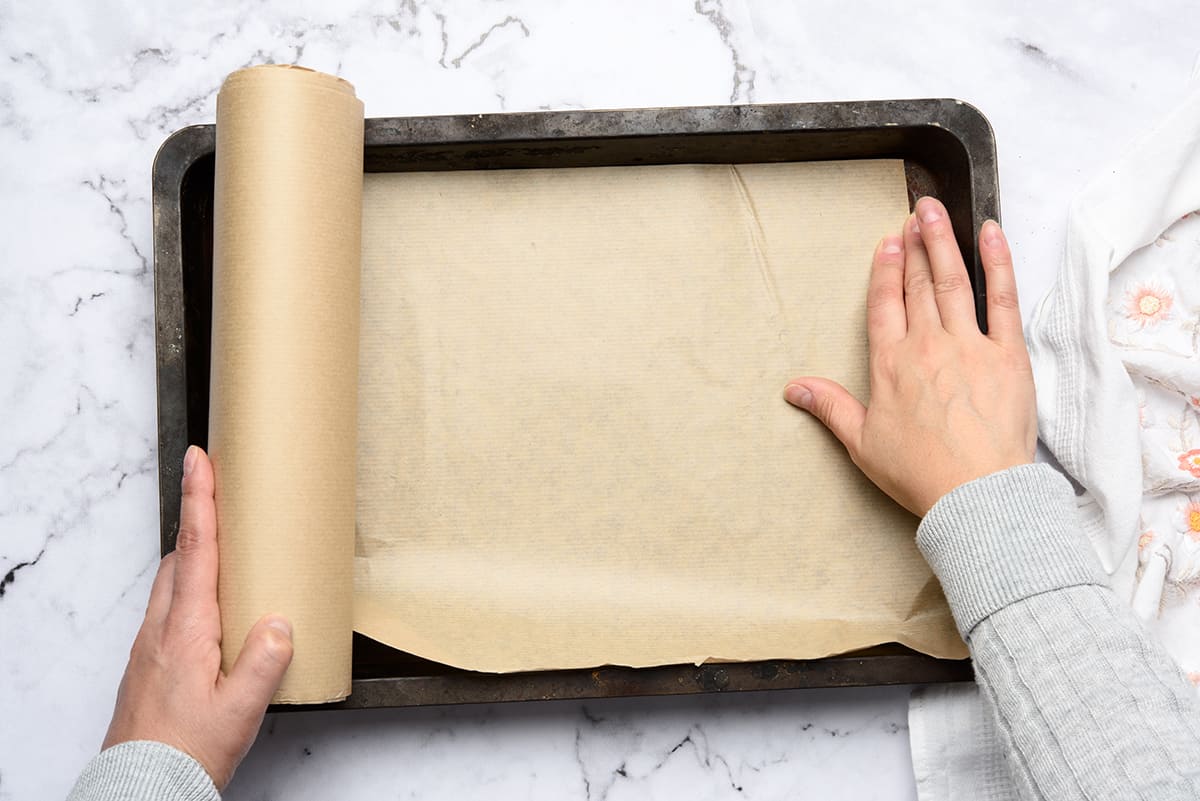
Parchment paper is a grease-resistant and heat-resistant paper that’s often used for baking. It’s an excellent alternative to aluminum foil, especially when baking cookies, pastries, or other delicate items. Parchment paper prevents sticking and promotes even browning, making it a popular choice among bakers. It’s also disposable, which makes for easy cleanup.
3. Toaster Oven Safe Baking Dishes
Investing in toaster oven-safe baking dishes made from materials like ceramic, glass, or metal can eliminate the need for aluminum foil altogether. These dishes are designed to withstand the high temperatures of a toaster oven, and many come with lids or covers to help retain moisture and prevent spills. Be sure to choose the right size and shape to fit your toaster oven, and always check the manufacturer’s guidelines for recommended usage and temperature limits.
